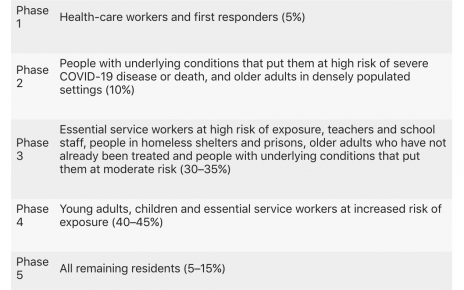Over the past two decades, 20 natural disasters made worse by climate change have caused damage to countries worth 10% or more of their national output.
In the most severe instance, the devastation Hurricane Maria brought to the tiny Caribbean country of Dominica in 2017 accounted for 260% of its gross domestic product. Two years earlier, Tropical Storm Erika caused damage worth 90% of Dominica’s GDP.
The eye-popping figures illustrate just one of the threats a hotter, stormier world poses to sovereign debt and the global financial system that relies on it, according to a sprawling new report from a group of academics, environmentalists and financial analysts. The financial stability of fossil-fuel-producing nations is also at risk, the 145-page report found, due to international climate policies and the accelerating transition to cleaner energy.
Released yesterday by a team of researchers from the University of London’s Centre for Sustainable Finance, the World Wide Fund for Nature’s Singapore office, the Asian Development Bank Institute and the climate risk data company Four Twenty Seven Inc., the report urged governments and international development banks to take swift and coordinated action to reduce the risks to sovereign debt.
“Sovereign risk matters,” said the researchers, who described sovereign debt as “the single most important asset class.”
At the end of last year, there was around $70 trillion of outstanding government debt or 28% of total global debt, the researchers found. That sovereign debt also “serves as a benchmark for the pricing of corporate debt,” they said.
Climate change is already straining the finances of small countries like Dominica that are physically at risk from climate change. For instance, the report noted that a series of hurricanes in the early 2000s forced both Grenada and the Dominican Republic to restructure their sovereign debts, a process that alleviated their short-term financial burdens but made it more expensive for them to borrow in the future.
While no countries have seen their borrowing costs increase yet solely due to climate risks, the major ratings agencies are increasingly taking the threat of natural disasters into account.
As the planet warms, more countries will face similar physical and financial threats, particularly in Myanmar, the Philippines and other nearby nations.
“The implications of climate change for macrofinancial stability and sovereign risk are likely to be material for most if not all countries in Southeast Asia,” the report said.
The finances of other countries that are heavily dependent on fossil fuel exports also are likely to come under growing pressure as demand for oil, natural gas and coal diminishes, the report found. Particularly at risk from the ongoing energy transition are Russia, which gets a third of government revenues from fossil fuels, and Saudi Arabia, where the government’s entire revenues stem from drilling for oil and gas.
Countries can reduce the threat climate change poses to their debts by assessing expected impacts, disclosing that information to the market, and creating incentives to direct public and private investment into curbing climate change and preparing for its physical impacts, the researchers said. International development organizations can help fund those efforts in developing countries, which are the most at risk but least able to prepare for climate impacts.
If governments and international institutions fail to quickly counter the growing sovereign debt threat, it could lead to a “vicious circle” for some countries, the researchers said. Recurring storms, heat waves and floods have the potential to crush the borrowing ability of vulnerable nations, leaving them even more exposed to future disasters.
“Governments need to take urgent action to climate-proof their economies and public finances,” the report said. “If they don’t succeed in this, they will be left helpless in an ever-worsening spiral of climate vulnerability and unsustainable debt burdens.”
Reprinted from Climatewire with permission from E&E News. E&E provides daily coverage of essential energy and environmental news at www.eenews.net.



